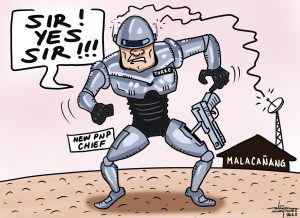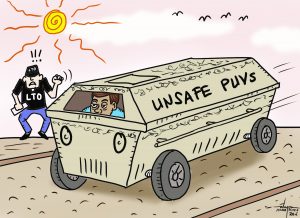The magnitude 6.9 earthquake that hit certain parts of Mindanao with epicenter in the town of Matanao, Davao del Sur disrupted not only the day-to-day living of people in the affected areas but also the economic activities therein.
In the provinces where most people are farmers and the others either government employees or small shop workers they have to stop all their routine activities as they have to find shelters for their families.
In the urban areas like Davao City, General Santos City, Digos City, Kidapawan and Marbel, most hit are businesses like malls, manufacturing, heavy and light industries, and services providing. Many of the city’s leading malls have to shut down to the public as managements cannot assure themselves that their buildings did not suffer any destruction which could jeopardize the lives or limbs of their customers and employees. Good thing public high schools are already on Christmas break. There are no more classes to be suspended.
Last Sunday a food delivery services system was on its second day of the launching in Davao City. Held at the grounds of a large mall in Lanang, the first day last Saturday was virtually a blowout. So many people came to find out what the services were and how these could be availed of. The day after, Sunday, December 15, the crowd of people coming as early as 9 in the morning served as an indication that again there was enough curiosity among those present.
Who will not be enticed to come when the food were sold on big discounts and delivered to where the customers wanted it sent. Many of those who came were also mall goers and they were expected to stay on until late during the night.
But when the earthquake hit at around 2:11 p.m., according to a relative of ours whose sound system was hired by the organizers for the 2-day event, the management of the food delivery services ordered the cancellation of the activities.
The strong temblor led the people attending the affair to scamper for safety. Those inside the malls – and there were thousands of them that the organizers expect to visit the launch area outside – came out rushing. They immediately left for home perhaps worried about the safety of their families.
Last Monday, most private and government offices were not holding office as their buildings have to be inspected by structural experts.
Not counting the damage in infrastructure, the virtual standstill of many livelihood activities because of the damage assessment undertaken, could already cost millions of pesos in the economy.
The next question then is, how long will it take for the areas gravely affected by the series of earthquakes to get back on their feet.
We are certain of the possibility that the people and businesses in these places will be requesting for deferment in the payment of their taxes. Or, perhaps they might request for a moratorium in the collection until their businesses are able to recover.
We all know that taxes are the lifeblood of government operation. With people and businesses unable to mobilize resources for their own survival and for re-starting their businesses or restoring their damaged facilities, who would care giving priority to paying what is due the government?
******************
There is wisdom in the advice of Davao City’s Planning Officer Engr. Ivan Chin Cortez for property owners to be watchful of the proliferation of substandard construction materials.
Sometime during the last week of November Cortez was quoted in local news reports as warning property owners because most buildings and other vertical developments are likely the first to collapse in the event of strong earthquakes.
We believe however, that Chin should have also warned property owners of scheming and profit-hungry contractors who hoodwink their clients into allowing certain construction materials, supposedly for better quality yet less expenses for them.
There are many of them in the city especially those who are aiming at government infrastructure projects. The winning contractor then sub-contracts it to another who in turn also sub-contracts the various stages in the construction to different groups of laborers.
The finished project becomes most vulnerable to earthquakes or even floods and other natural but destructive phenomena.


